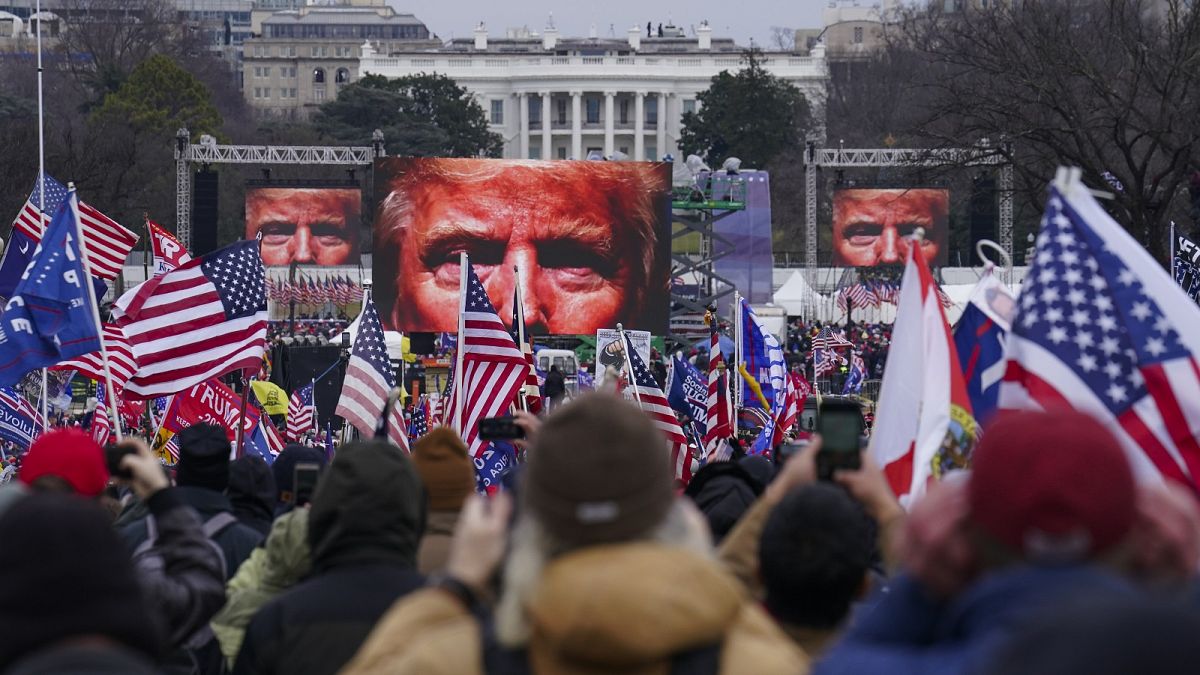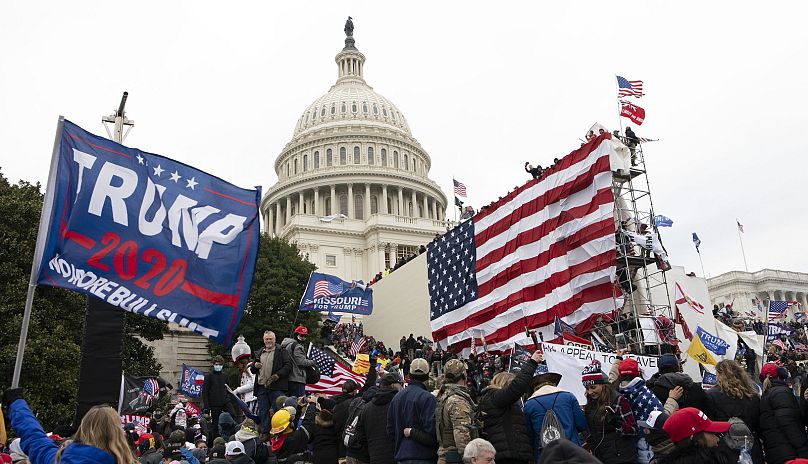The events of January 6 were not a one-off. They were the culmination of various pro-Trump factions coming together "under his banner" for a common cause, experts tell Euronews.
The mob that laid siege to the US Capitol in Washington DC on January 6 was as determined as it was varied.
Among the Trump supporters arrested after the incident were business leaders, retirees, far-right ringleaders, paramilitary militias, police, firefighters, educators, conspiracy theorists and even a medal-winning Olympic swimmer.
US prosecutors believe that some attackers were seeking to "capture and assassinate elected officials", according to court documents. And new threats of violence have been made for during president-elect Joe Biden's inauguration.
But the fury apparently driving the rioters, galvanised by the speeches of the outgoing president, was not an accident. Nor was it solely the result of radicalisation online or via the conservative media's ecosystem that has for months been recirculating baseless accusations of electoral fraud.
The phenomenon of anti-government militias, radical right-wing groups and followers of conspiracy theories growing closer to pro-Trump protesters started due to the COVID-19 pandemic and accelerated throughout 2020, according to experts.
By the spring, these groups had joined the anti-lockdown protests that took place in places like Michigan, Texas, California and Massachusetts. They got involved for several reasons including increased visibility and easier recruitment.
"I think it is a certainty that the protests over the last year cemented a social movement that now includes everything from white supremacists to militias to conspiracists such as QAnon folks as well as basic Trump supporters, especially those who were riled up by Trump’s talk of a stolen election and are broadly organized under the 'Stop the Steal' idea," Dr Heidi Beirich, Co-Founder and Chief Strategy Officer Global Project Against Hate and Extremism, told Euronews.
"These are groups that in the past would likely not have worked together, but Trump has brought them all together under his own banner".
It's this "coalition," she noted, that we saw coming together to storm the Capitol on January 6.
In the days following the presidential election in November, these groups found themselves at pro-Trump demonstrations organised by the Stop The Steal movement, accusing - without proof - president-elect Joe Biden of electoral fraud.
"There has been increasingly more alarming factions of MAGA coming together for these bigger Stop The Steal events across the country," explained Dr Joan Donovan is the Research Director of the Shorenstein Center on Media, Politics and Public Policy at the Harvard Kennedy School.
"Some had come together during Charlottesville in 2017, while others first met each other during the Reopen protests and Trump rallies".
Consolidation of Trump's base
While Donovan believes that social media networks played a key role in the planning and coordination of the events in Washington DC on January 6, it should also be taken into account that groups that "use repetition of protest gain momentum over time by returning to the tactic and building the scale over time".
This could be said of participants like Jacob Anthony Chansley, known as QAnon Shaman, who has already involved in Stop The Steal events in Arizona in November where he also wore make-up and buffalo horns.
By working together at the anti-BLM protests and the anti-lockdown protests, these various movements came together in opposition to what was happening here in the US," added Beirich. "And as Trump agitated to undermine the election, these various streams of his base consolidated behind him, and then took his direction to head to the Capitol on January 6".
This is not the first time in recent US history that an assembly building has been targeted by violence and armed groups. In the spring of 2020, numerous demonstrations took place in front of state capitols across the country. In April, demonstrators, some armed, even entered Michigan's statehouse.
In May, militia members attending an anti-confinement rally lynched an effigy of Andy Beshear, Kentucky's Democratic governor, in the garden of his official residence. Worse still, militiamen were also arrested after planning to kidnap Gretchen Whitmer, the Democratic governor of Michigan, whom they blamed for lockdown restrictions to curb the pandemic.
For Jared Holt, a visiting researcher at the Atlantic Council's Digital Forensic Research Lab, there isn't a direct link between these events or their participants but "but the similarities are striking".
"Extremists came together behind a single common cause for protests after the 2020 election in a similar way that they did while protesting against COVID-19 restrictions on business and public gathering, but at a much grander scale," he said.
A keen observer of the American radical right, Holt notes that "the false reality that motivated the insurgents on the ground [in Washington DC] has been amplified and legitimised by the highest levels of Republican power in the country, including members of Congress and President Trump".
"The attack on the US Capitol serves as a grim warning as to the potential consequences of the spread of disinformation and extremism," he added, "and the radical action it can frequently inspire".

